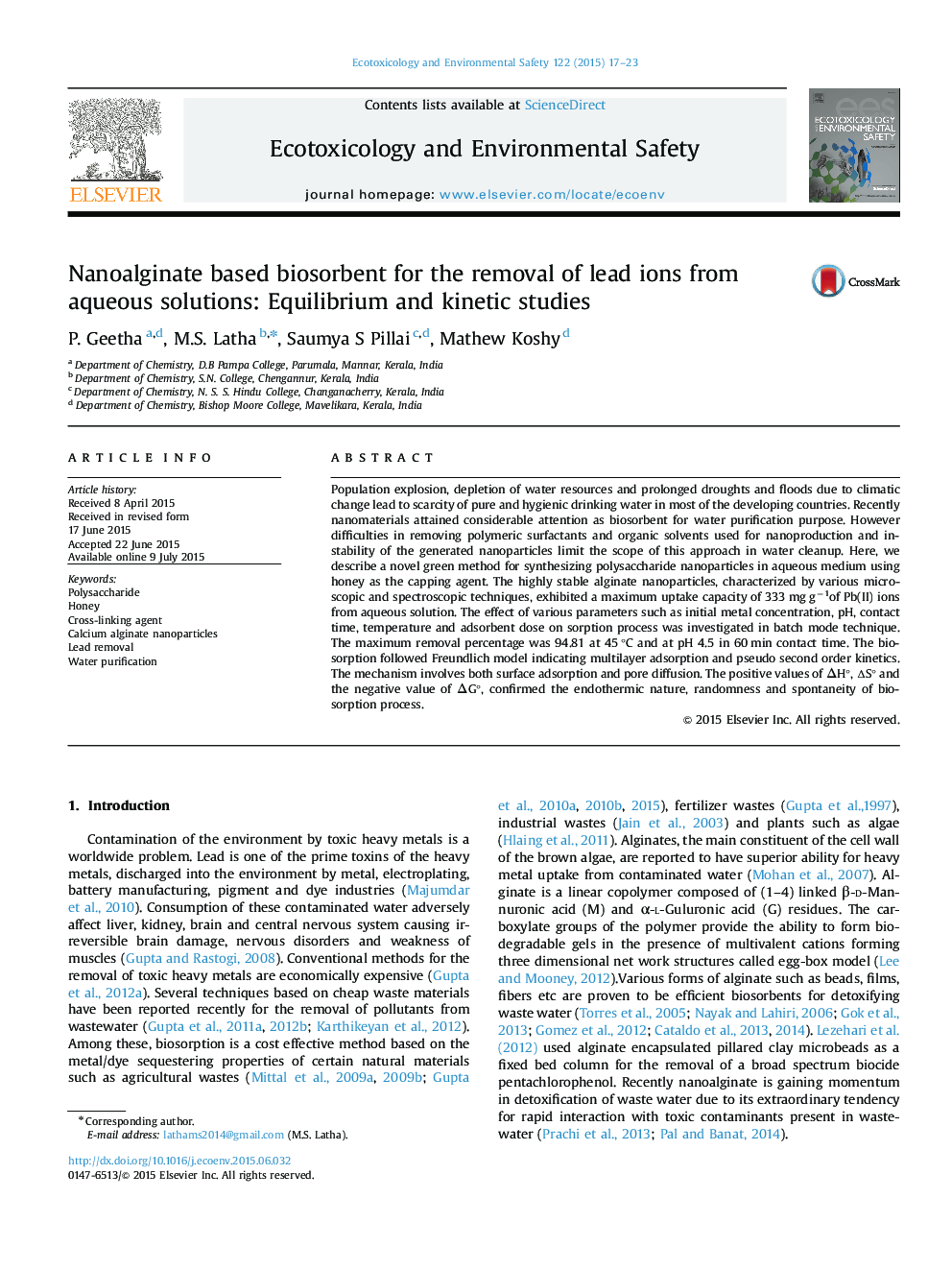| کد مقاله | کد نشریه | سال انتشار | مقاله انگلیسی | نسخه تمام متن |
|---|---|---|---|---|
| 4419562 | 1618941 | 2015 | 7 صفحه PDF | دانلود رایگان |

• A new green method is employed for the synthesis of calcium alginate nanoparticles.
• Natural honey is used as the capping and stabilizing agent.
• A maximum of 94.5% lead ions was adsorbed onto calcium alginate nanoparticles in 60 min from 10 mg L−1 lead solution at pH 4.5 and at 45 °C.
• Both intraparticle diffusion and surface adsorption mechanisms are involved.
• Thermodynamic studies confirmed the endothermic nature, spontaneity and feasibility of the biosorption process.
Population explosion, depletion of water resources and prolonged droughts and floods due to climatic change lead to scarcity of pure and hygienic drinking water in most of the developing countries. Recently nanomaterials attained considerable attention as biosorbent for water purification purpose. However difficulties in removing polymeric surfactants and organic solvents used for nanoproduction and instability of the generated nanoparticles limit the scope of this approach in water cleanup. Here, we describe a novel green method for synthesizing polysaccharide nanoparticles in aqueous medium using honey as the capping agent. The highly stable alginate nanoparticles, characterized by various microscopic and spectroscopic techniques, exhibited a maximum uptake capacity of 333 mg g−1of Pb(II) ions from aqueous solution. The effect of various parameters such as initial metal concentration, pH, contact time, temperature and adsorbent dose on sorption process was investigated in batch mode technique. The maximum removal percentage was 94.81 at 45 °C and at pH 4.5 in 60 min contact time. The biosorption followed Freundlich model indicating multilayer adsorption and pseudo second order kinetics. The mechanism involves both surface adsorption and pore diffusion. The positive values of ΔH°, ∆S° and the negative value of ΔG°, confirmed the endothermic nature, randomness and spontaneity of biosorption process.
Journal: Ecotoxicology and Environmental Safety - Volume 122, December 2015, Pages 17–23